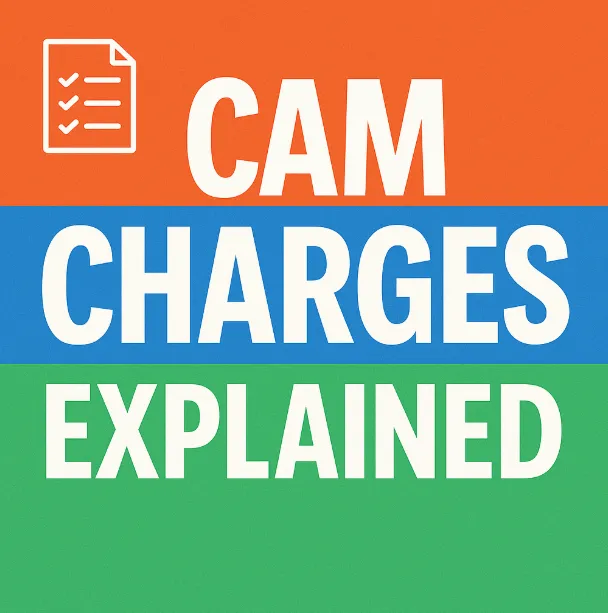
📊 What Are CAM Charges? A Landlord & Tenant Guide to Commercial Leases 🏢
📊 What Are CAM Charges? A Landlord & Tenant Guide to Commercial Leases 🏢
💰 CAM Fees Explained: How to Avoid Surprises in Your Commercial Lease 📉
🧾 CAM Charges Explained: What Every CRE Investor & Business Owner Should Know
When signing a commercial lease, one line item that often confuses tenants and even landlords is CAM charges. CAM, or Common Area Maintenance, refers to the shared expenses tenants pay to maintain the property’s communal areas — think landscaping, parking lot upkeep, exterior lighting, and building security.
Understanding CAM charges is essential for making smart leasing and investment decisions. Here's what you need to know.
💼 What Are CAM Charges?
CAM charges are part of what’s known as a triple net (NNN) lease, where tenants are responsible for their share of property taxes, insurance, and maintenance. CAM fees cover the ongoing costs of shared areas used by all tenants in a commercial building or center.
These areas may include:
· Parking lots
· Hallways & lobbies
· Elevators
· Landscaping & irrigation
· Security services
· HVAC and lighting systems (in common zones)
🧮 How Are CAM Charges Calculated?
CAM is typically divided pro rata — based on the tenant’s square footage relative to the total leasable space. For example, if a tenant occupies 2,000 SF of a 20,000 SF retail center, they’d owe 10% of the total CAM expenses.
Some leases are "fixed CAM" (predictable monthly charges), while others are "variable CAM", where tenants are billed actual costs each year — which can lead to sticker shock if budgets aren’t clear upfront.
⚠️ What to Watch for in CAM Agreements
Before signing your lease, review these elements carefully:
· CAM caps: Does the lease set an annual limit on increases?
· Admin fees: Are you being charged a management or overhead fee on top of CAM?
· Audit rights: Can you request receipts or breakdowns of how CAM fees were spent?
· Exclusions: Some costs, like capital improvements or repairs from natural disasters, should not be included in CAM.
🏢 For Landlords: CAM as a Revenue Tool
For property owners, well-structured CAM charges help recover operating expenses and boost NOI (Net Operating Income) — which directly impacts your property’s valuation.
However, transparency matters. Clear and fair CAM structures build long-term tenant trust and help avoid costly disputes or vacancies.
💡 Pro Tip for Tenants
Always ask for the prior year’s CAM reconciliation and budget projections for the upcoming year. Compare them to your proposed share of occupancy. A good broker or attorney can help spot red flags.
✅ Conclusion
Whether you’re a landlord looking to recover expenses or a business tenant planning your monthly occupancy cost, understanding CAM charges is key to negotiating better deals and protecting your bottom line. If you need help breaking down your lease terms or want to explore better options, our team at Viking Enterprise is here to help.
📞 Let’s decode your lease together.
https://www.houstonrealestatebrokerage.com/
https://www.houstonrealestatebrokerage.com/houston-cre-navigator
https://www.commercialexchange.com/agent/653bf5593e3a3e1dcec275a6
http://expressoffers.com/[email protected]
https://app.bullpenre.com/profile/1742476177701x437444415125976000
https://author.billrapponline.com/
https://www.amazon.com/dp/B0F32Z5BH2
https://veed.cello.so/FOmzTty6oi9
© 2023-2024 Bill Rapp, Broker Associate, eXp Commercial Viking Enterprise Team
